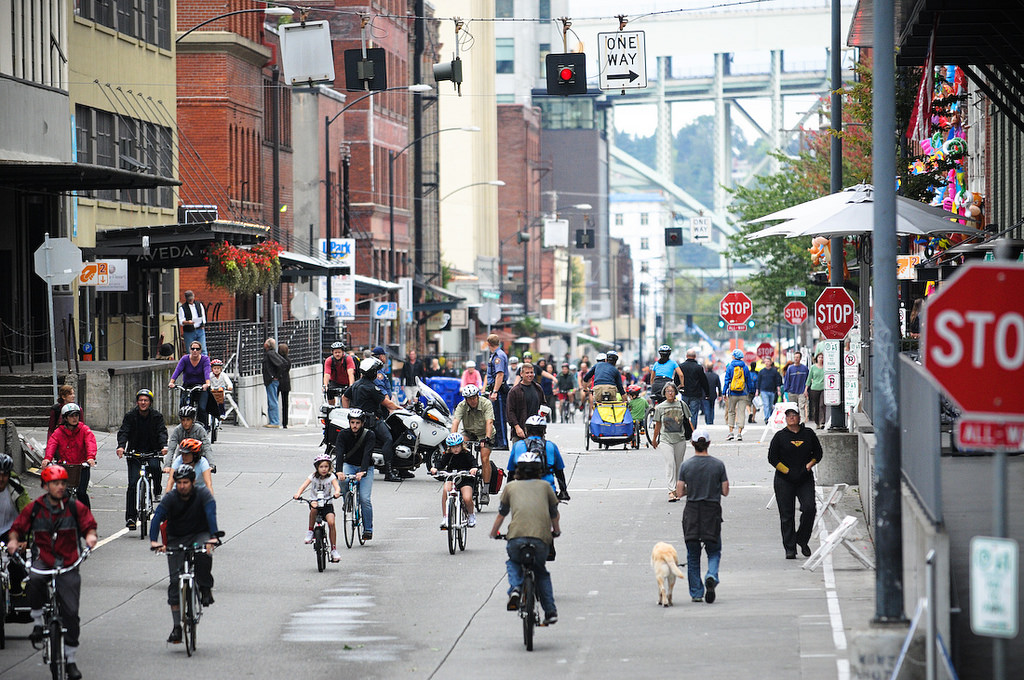
(Photos: Jonathan Maus/BikePortland)
While riding from the South Park Blocks to Pioneer Courthouse Square with my daughters and several other families and kids on Saturday, a recurring thought popped up: Despite all our livability accolades, Portland lacks carfree streets — places where people can move around, shop, linger, and socialize without being harassed by the threat of cars, trucks, trains and streetcars running them over.
As a group of us met for the Kidical Mass Ride at the South Park Blocks, I remembered City Commissioner Randy Leonard’s exciting (although off-the-cuff) pronouncement two years ago that he was “intrigued” by carfree streets after a trip to Copenhagen. He specifically mentioned that the South Park Blocks would be a great candidate.
There are a lot of reasons why Portland is primed for more carfree space downtown, but for some reason it hasn’t happened yet.
The South Park Blocks — home to our city’s largest art museum, university, and theaters — isn’t the only place we might give carfree streets a try.
How about Director Park, just north of the Park Blocks between SW Yamhill and Taylor? Is it really necessary to retain motor vehicle access through the park on SW Park and 9th? We built a fantastic new park adjacent to a large movie theater and a popular cafe, but we still allow cars to park and drive on the narrow little road between the two.
There’s also SW Ankeny, the site of Carfree Day back in 2006. Between Naito and 3rd it’s just a tiny alleyway. With historic buildings and tourist sites (like Voodoo Doughnuts), it has tons of charm that would make for an ideal carfree plaza. Or how about a few blocks west on Ankeny between SW Park and Broadway?

On a more high-profile scale, my new favorite dream is to think of NW 13th Street in the Pearl District becoming a pedestrian plaza. You’ve probably already strolled down it during First Thursday or during the recent Sunday Parkways event. With its collection of great shops and restaurants, 13th would be a major downtown attraction if it were given the safety and space-saving benefits of being carfree.
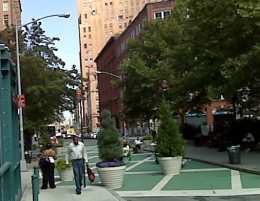
(Photo: Noah Budnick)
There’s a lot of precedent for creating more carfree space in cities. New York City is leading the way in the U.S., and Latin America and Europe have been doing it forever.
Here in Portland we seem to have forgotten about this issue. I don’t know of any organized advocacy effort around creating more carfree space, and no local politicians have made a peep about it since Leonard’s comment two years ago.
Why not?
I now turn to you with some questions…
Do we really need to be able to drive down every single downtown street?
Is creating world-class public space (that’s not surrounded by motorized zones like Pioneer Square) a political risk? Are our progressive city leaders afraid of push-back from businesses who say they need private motor vehicle parking and access in front of their storefronts or else they’ll move to the suburbs? Or, perhaps they’d be happy to vote for a carfree street pilot project, but no one has put together a proposal for one? If that’s the case, which local advocacy group(s) might be best suited to organize and propose a carfree street pilot project?
What are we waiting for Portland? We can do this… can’t we?



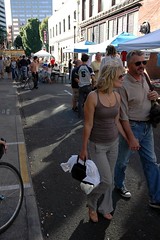
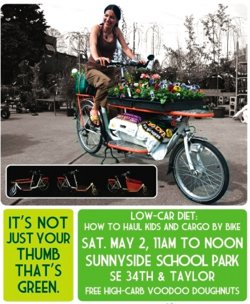
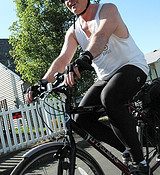
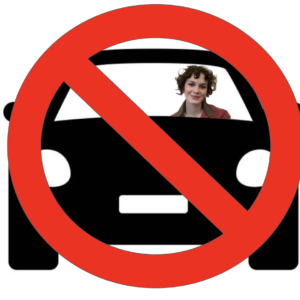
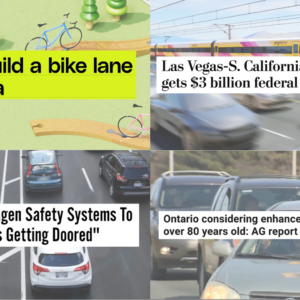
Thanks for reading.
BikePortland has served this community with independent community journalism since 2005. We rely on subscriptions from readers like you to survive. Your financial support is vital in keeping this valuable resource alive and well.
Please subscribe today to strengthen and expand our work.
Most the big box stores in Pioneer Square have stores in the Suburbs, except American Apparel(no thank you)
Many cities in Germany have converted the entire historic city center to carfree zones. It creates a really desirable destination for shopping, lingering, human-scale commerce (like farmer’s markets). And naturally bikes become the most efficient way to get where you’re going…
The Pearl Street Mall was one of my favorite places to hang out in Boulder CO when I lived there ’94-’98. Way awesome. I miss walking down it on a cold winter night with snow all about.
There should be more pedestrian corridors like that in the world, Park blocks seem like a perfect candidate to me.
These are great points and areas to consider, Jonathan, but (and color me cynical if you must) I think the only thing that Randy Leonard gives a fig about is Randy Leonard. Could this be a job for Roger Geller or someone else who might be a more viable agent?
NW 23rd should really be a car-free shopping street. If there were a street like that downtown it would be a no-brainer.
I agree with KJ. I would like pedestrian malls…the one in Boulder makes even the people on bikes get off and walk their bikes.
Let’s not ignore the big conflict already happening between people walking and people on bikes.
Some great examples in this article. All of the streets mentioned are basically “local access” streets, and I can’t imagine anyone familiar with downtown using them for anything other than deliveries or parking. SW Ankeny and NW 13th in particular are very unusual streets to see people driving on. 13th is awkward to walk on with the lack of sidewalks and seeming 1 traffic lane, and the intersection of NW Glisan and 13th is a perpetual nightmare.
LLoyd center used to be an open mall. I don’t think that people in Oregon like that concept.
Of course that was the 70’s and car-centric thinking was approaching its zenith. Things have changed, maybe thinking has too.
“Let’s not ignore the big conflict already happening between people walking and people on bikes.”
FUD.
Permanent car free streets are a great idea, and the Park Blocks is a great place to start.
Downtown needs cafe districts that are closed to cars….SW Stark from 13th to 10th would be perfect.
Also included in SW Ankeny, 2nd between Burnside & Ash. Extending the sidewalk on 3rd in front of Voodoo could create a fantastic plaza. This would create an entire car free district from the river to Third.
If the New Market Theater were converted back & Saturday Market were utilized the rest of the week this area could be world class.
our fearless pdx political leadership has no problem splashing some paint on pavement but they have always treated loss of parking like the third rail.
Like Paul, I always thought part of NW 23rd would make a nice Ped Mall. In my opinion it’s one of the most unpleasant streets to drive down–traffic moves so slowly (everyone looking for parking), and pedestrians are constantly darting across the road. And up until two years ago the pavement was in shambles. Too bad they repaved it, it’ll probably never be car-free now.
Iowa City also has a lovely pedestrian mall (several blocks long)in the heart of their downtown, near the University. I’ve heard it was designed by the same people who did the Pearl Street ped-mall in Boulder.
This brings to mind an article by an urban blogger I followed when I lived in Texas:
http://www.neohouston.com/2009/12/perception-vs-reality/
Check it out, some interesting insights from San Francisco.
When I revisited my nondescript little town in France about 25 years after my teaching stint there, I was struck by how sophisticated and 21st century it had become. A major part of that sense came from the conversion of a main street leading off the town square from a car drag to a lovely pedestrian mall, whose shops and cafes were thriving.
It even had some stairs in it–something that pretty well eliminates wheeled traffic. It was lovely. We should do it here.
The big difference in the successful creation of major carfree streets in the last 40 years (US vs. European experience) has been to only transform carfree streets where the urban space is already too successful (too vital)…too many people, bikes and cars…where you have to ration space. The failures in these conversions (most US examples) has been when the spaces were already failed spaces (lost population and commercial activity) and carfreeness was the tool of last resort. In this case…perhaps only 23rd has the vitality and population to succeed (there would be off hour vehicle access for deliveries, maintenance, etc.).
This is not to say that smaller conversions could not occur elsewhere, as pointed out…such as SW Ankeny.
If you want to see what a carfree park blocks would be like, just walk south until you hit PSU. Park ave’s two streets went all the way down until they made them pedestrian zones decades back.
What stops us most?
1. Fear of declining business (if you plan it right in an already thriving corridor, this can be avoided)
2. Limitations of our own imaginations. Most people say ped plazas can’t be done in the U.S., that it’s only successful outside of the country. As many have pointed out, we’ve got some great examples of urban plazas in our country.
3. Political/public backlash from people who see all of these improvements as a threat to their way of life. Some of them may “stay out of the city” but many will come for the increased pleasure of walking around.. it will help Portland become even more of a destination. Take a look at Saturday Market for an example.
Just some ideas. We’re also governed by the MUTCD, so you have to take some liability on.. other cities have taken the lead on this, so maybe we can learn from them!
When I moved to Madison WI in 1979, State St (approximately 10 commercial blocks stretching from the U. of WI to the state capitol building) allowed car traffic. But the next year, State St became car-free (allowing busses and store deliveries).
Since that time, State St. continues to be a vibrant area, and I have a strong suspicion that businesses are eager to take advantage of storefront vacancies.
I don’t know what happened politically in Madison to enable this transition. It would be interesting to learn about this in order to help imagine how a street like NW 23rd in Portland might undergo a similar transition.
I am not convinced ‘car-free’ is the model to pursue.
When one mode gets preferred treatment over another, it creates a rift. We feel it as peds/cyclists vs cars. My suggestion rather than car-free is street neutral. No sidewalks, no defined parking, everyone is an equal user. Thus, when there is no defined bike lane or sidewalk, the car is required to adjust for other users, and a higher level of diligence is required.
I have read of this approach in some European cities, and think this approach is the preferable one, especially in the downtown areas.
Remember that some users of the block do not have the mobility,( ie, elders and mobility-challenged) and freight may require access. Car free creates a level of resentment and extra work for some. Street nuetrality requires diligence and care on everyones part.
When they tried this in Eugene years ago it just killed downtown
“Car free creates a level of resentment and extra work for some.”
I don’t see any reason to coddle a doomed paradigm.
jim.. the downtown in Eugene was most likely killed by the mall and the suction of energy to a carcentric shopping experience.
Spare_wheel.. I don’t see it as coddling anyone. Truth said, there will always be folks who can’t/won’t ride or walk. Logistics of getting those goods to market, and the store down YOUR street will mean freight. I am not planning on opening a rickshaw service anytime soon. We live in the world we do, and this world has grown used to the status quo. In changing the status quo, change must be incremental, for fear of backlash that would set us back decades.
Car free only works when the area is a commercial/retail area (incidental visitors). Good luck if there are offices regular commuters).
Some carfree streets would make sense, particularly since our blocks are already so small, pedestrians have to cross traffic more often than they normally would. Seattle has some carfree streets (just one that comes right to mind), that are accepted and appreciated.
Having lived on the Park Blocks, I can say it’s an excellent place to get rid of driving streets. It’s a nuisance to drive on and doesn’t even lead anywhere.
I also lived in Burlington, VT for a few years and they have a great, huge walking mall running through the central downtown that’s become a major economic engine for the town.
There’s a fantastic pededstrian mall in Budapest that’s probably well over a mile long. Great shops and restaurants along the entire distance. It’s a very relaxing place to visit, sit on the benches and people watch, etc. If Portland had something like that, it would definitely draw people in, which could only benefit the businesses there.
NW 23rd would make a great pedestrian plaza, but all of the businesses there think that if their customers can’t park right out front they won’t come (think of the arguments related to the proposed parking garage), so good luck with that.
NW 13th would be awesome (I’ve thought of this street myself). They should literally make that change tomorrow.
And so the story of Curitiba begins with its central street, Rua Quinze-the one that the old plan wanted to obliterate with an overpass. Lerner insisted instead that it should become a pedestrian mall, an emblem of his drive for a human-scale city. “I knew we’d have a big fight,” he says. “I had no way to convince the store-owners a pedestrian mall would be good for them, because there was no other pedestrian mall in Brazil. But I knew if they had a chance to actually see it, everyone would love it.”
To prevent opposition, he planned carefully. “I told my staff, ‘This is like war.’ My secretary of public works said the job would take two months. I got him down to one month. Maybe one week, he said, but that’s final. I said, ‘Let’s start Friday night, and we have to finish by Monday morning.'” And they did-jackhammering the pavement, putting down cobblestones, erecting streetlights and kiosks, and putting in tens of thousands of flowers.
I think this is a great proposal. The costs would be nominal, the experience would be improved for everyone and retail business would thrive.
Maybe someone could work up a CAD illustration of what the finished product may look like. It would be easier to explain the benefits visually I think. Where’s that guy who did the incredible CRC video?
We already have several car free blocks. It’s called the South Auditorium District. Lovejoy Fountain, anyone? The development hasn’t taken advantage of it, but many people forget that an entire district in the city is already car free.
Those new to Portland may not realize that parking along the inner perimeter of the South Park Blocks was prohibited from 1982 until 2007, when PDoT issued an administrative order to reinstate parking. The original 1982 decision to remove cars was done with approval from both the Design Commission and Council. The 2007 decision was made solely by PDoT administrators, over the objections of Portland Parks & Recreation, the Downtown Neighborhood Association, and others. See the PDNA’s presentation on South Park Blocks Parking.
The economy in downtown is bad enough allready. Why would you want to discourage even more people from visiting downtown?
Hi jim,
can you explain how you think having more space for people to linger, socialize, window shop, etc… would discourage people from visiting downtown?
Also, Have you ever considered that the economy might be hurting because people are paying so much to buy gas, pay to park, maintain their cars? Cars are the 2nd highest expense for american families after houses.
People have the right to choose cars for their transportation. I don’t want govt. to tell me what mode of transportation I have to use. Most all people choose cars. If they keep making it more car unfreindly in downtown than people will not go there to shop. They will go to loyd center, Wash, square…. Downtown will suffer as the consequence. This is nothing new, it’s been fact for years, even before the gas increases and the bad economy.
Have you considered taking the familly to vancouver bc by car? or some other place that you are not at all familiar with? A car would be something nice to have, all your luggage, snacks , jackets everything will be right there, If someone tells you about something cool accross town you can get there easily
In short- If I can’t drive there- I won’t go there
jim,
the government is telling you anything about which mode to use…. it is/should be designing its transportation system in the way that provides the highest level of service to the most users at the best value possible.
i hear you about the convenience of having a car… but not everything feels the way you do. Me and my family actually very much prefer the ease and independence that NOT having a car in cities allows us.
what i’m promoting above is simply re-allocating some of the existing street network to people to use their feet and bikes as vehicles instead of private cars.
I don’t think anyone is proposing closing off the entire downtown area to cars, we’re just talking about a few streets here and there. If you choose to drive, you could still have your car a few blocks away. That’s what drives me nuts about the NW 23rd parking debate (if the customer can’t park right in front, they won’t come). Are you saying you can’t walk a few blocks? I’d argue you’ll do a heck of a lot more walking from the parking lot at Washington Square to the mall shops then you’d do if some of these streets were closed to autos.
I’m not saying I can’t walk a few blocks, I’m saying people choose not to go to places where it is being made hard for them to use their cars. Downtown has suffered enough allready, don’t put more restrictions on driving downtown.
Govt. has made no secret that it wants us out of our cars. Do you think they have thought about where to get the money they will loose from gas tax?
jim,
consider for a moment that there are many types of people in the world with many different perspectives and wants/needs.
You say “people choose not to go to places where it is being made hard for them to use their cars”… but wouldn’t you agree that people also choose to not go places where it is hard for them to walk and breathe and live and bike and hang out?
“I don’t want govt. to tell me what mode of transportation I have to use.”
I hope you also do not support the massive subsidies your chosen form of transport gets from the state and federal government.
“I don’t think anyone is proposing closing off the entire downtown area to cars”
I think large swathes of downtown could be closed off as is common in many european cities. Most of the downtown area is easily walkable from peripheral parking lots.
“People have the right to choose cars for their transportation. I don’t want govt. to tell me what mode of transportation I have to use.” –Jim
This is a common misconception. There is no right to drive. Many people prefer to drive, and driving privileges are astonishingly easy to obtain, but driving is not a right. As much as we might not like it, Government does have the legal authority to tell us what mode of transportation we can’t use, in the event we commit a serious enough offense while driving, or (inexplicably) cannot pass the (again, astonishingly easy) driver’s license test. Government also strongly suggests which mode we are expected to use by providing facilities that overwhelmingly support one mode over all others.
I suppose anyone has the right to call a cab though, if they really want to travel by car–as long as they can afford it.
“Do you think they have thought about where to get the money they will loose from gas tax?”
That money is going away regardless of whether people drive, since we are literally running out of gas. Hybrids have already (I’m guessing) made a bit of a dent in gas tax revenues, even though those who drive them are still driving, and still using the same roads, and still wearing out the roads at the same rate. If roads are used less for cars and more for bikes/peds, the maintenance costs plummet, resulting in less need for gas tax revenue.
El-
An aquaintaince that traveled every corner of the earth looking for oil told me that there is more oil allready caped off than we will ever use. I don’t see us moving away from it anytime soon.
jim– The rise of the hybrid sure does give the appearance that we are moving away from it. There may indeed be enough oil left in various places to theoretically keep things going, just like there is enough space between molecules that I ought to be able to walk through a wall. Extracting the remaining oil becomes ever more expensive (or so oil companies would like us to believe) so that even if there is plenty left, not everyone will be able to afford it.
El-
I never said driving is a right.
I’m just saying govt has no right to dictate what kind of transportation I use.
Don’t try and force me onto a bus. Bus’s aren’t safe. Not everyone can ride a bike. Trains only go where the tracks go, and that is only if it’s not too hot or cold…
Cabs are not for everyone either
I agree that drivers licenses are way too easy to get. That is something that needs reformed. Maybe those that don’t pass the exam should buy a horse?
The rise of hybrid is because california mandated it
Ever since the construction on NW 23rd I’ve thought it would be the perfect carfree street for Portland. Unfortunately, for a lot of reasons, I don’t think that’s ever going to happen.
Basically, it’s not going to happen unless the PBA and the developers who run this town want it to happen. And these days they are much more focused on criminalizing hanging out on the streets of downtown and NW than on creating more pedestrian space. The only people they want to sit down anywhere are the people who can pay top dollar for organic fair-trade lattes and micro-brews. They don’t really want anyone else socializing or strolling or (heaven forbid!) sitting anywhere else.
Just come on down to the monthly Sidewalk Advisory meetings Amanda Fritz hosts every month (next one is this Monday @ 3:30 in the Portland Bldg.) to see what I mean.
For these kind of auto-free zones to work as they do in many German cities, you must have a lot of people, i.e density. Compared to cities there Portland is more than half empty as are most of its neighborhoods.
Build affordable housing on all the parking lots in downtown and neighborhood commercial districts, and you might get the “problem” of too many people, for which “Pedestrian zones” are the solution. In a lot of Portland it still looks like “we lost the war.”